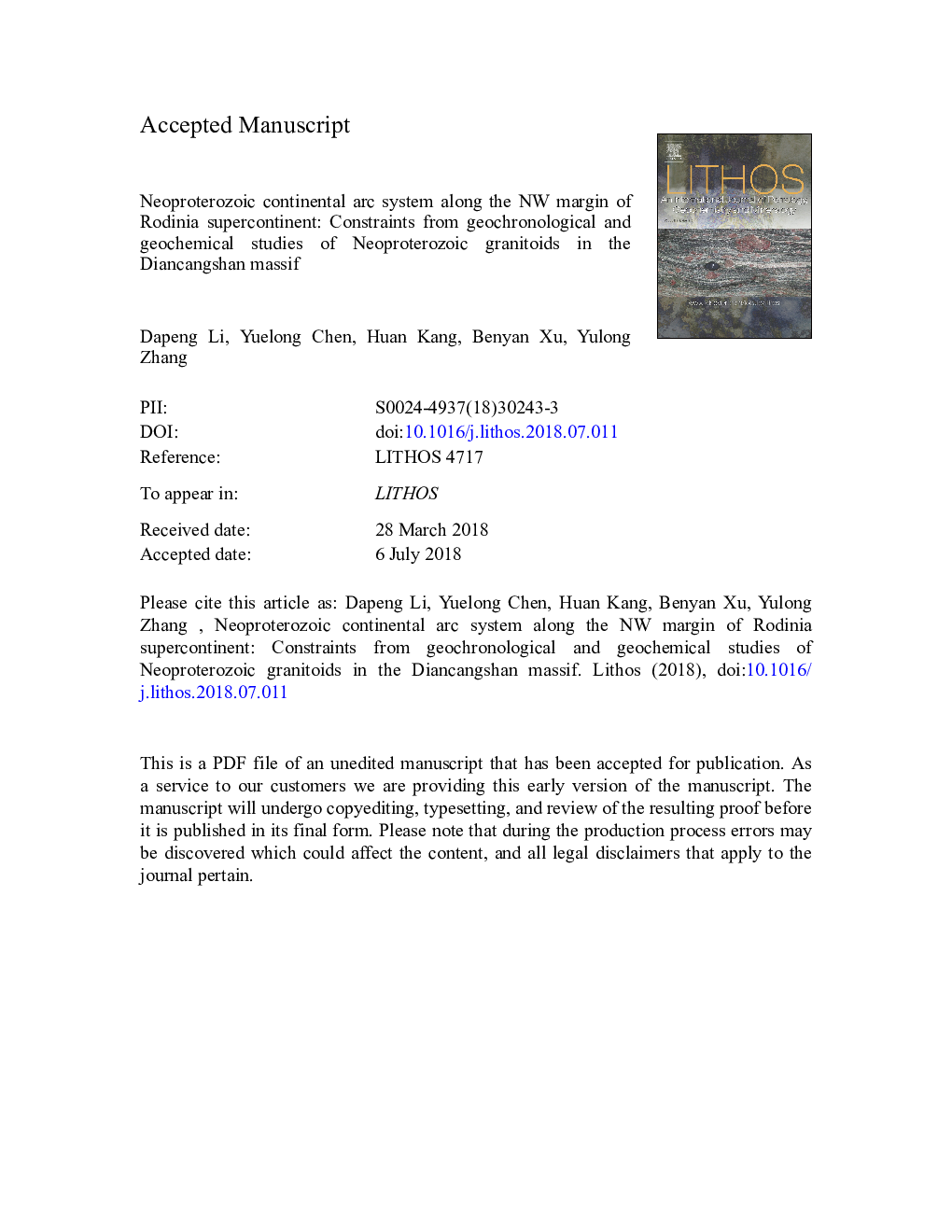| کد مقاله | کد نشریه | سال انتشار | مقاله انگلیسی | نسخه تمام متن |
|---|---|---|---|---|
| 8911509 | 1638616 | 2018 | 53 صفحه PDF | دانلود رایگان |
عنوان انگلیسی مقاله ISI
Neoproterozoic continental arc system along the NW margin of Rodinia supercontinent: Constraints from geochronological and geochemical studies of Neoproterozoic granitoids in the Diancangshan Massif
ترجمه فارسی عنوان
سیستم قوس قاره ای نئوپروتروزیوزی در امتداد حاشیه شمال غربی رودینیا: محدودیت های مطالعات ژئوشنگولوژیک و ژئوشیمیایی گرانیتویدهای نئوپروتروزیوئیک در ماسه دایان کانسنگ
دانلود مقاله + سفارش ترجمه
دانلود مقاله ISI انگلیسی
رایگان برای ایرانیان
کلمات کلیدی
موضوعات مرتبط
مهندسی و علوم پایه
علوم زمین و سیارات
ژئوشیمی و پترولوژی
چکیده انگلیسی
The Neoproterozoic period is a key geological time in earth history that witnessed the breakup of the Rodinia supercontinent. The Diancangshan and Ailaoshan Massifs are two major segments along the Ailaoshan tectonic zone, and the Neoproterozoic metamorphic igneous rocks in these massifs preserve key clues to elucidate the on-going dispute over the geodynamic drives for the break-up of Rodinia. Many studies have been performed on the Neoproterozoic igneous rocks along the Ailaoshan Massif, but the contemporaneous igneous rocks in the Diancangshan Massif have been poorly studied. In this study, zircon U-Pb-Hf isotopic, whole-rock elemental and SrNd isotopic data are presented for a granitoid suite from the Diancangshan Massif. Zircon UPb dating shows that all the monzodioritic and granitic samples from the inner part of the southern Diancangshan Massif yielded Neoproterozoic crystallization ages of 701-797â¯Ma without exception. One sample collected from the southern edge of the Diancangshan Massif gave intrusive ages of ~239â¯Ma. Therefore, the Neoproterozoic magmatic activities in the Diancangshan Massif have been underestimated, and the spatial distribution of the Neoproterozoic intrusions occupies at least 1/3 of the whole area of the Diancagnshan Massif. The monzodioritic samples originated from the mixing of magmas generated from a subduction-modified mantle wedge and mafic lower crust. The granitic samples can be subdivided into two groups. The Group 1 I-type granitic samples have moderate A/CNK values of 0.80-1.07, which were derived from the partial melting of mafic lower crust. The Group 2 strongly peraluminous granitic samples (A/CNKâ¯>â¯1.1) originated from a hybridized source of the graywacke and mafic-derived components. Geochronological, petrological and geochemical studies show that Neoproterozoic magmatism in the ATZ was generated in a prolonged (>80â¯Ma) continental arc system. An Andean-type orogeny formed along the NW margin of Rodinia (i.e., the Seychelles, Himalaya, Amdo and South China including the Ailaoshan tectonic zone) and induced the regional internal lithospheric extension.
ناشر
Database: Elsevier - ScienceDirect (ساینس دایرکت)
Journal: Lithos - Volumes 316â317, September 2018, Pages 77-91
Journal: Lithos - Volumes 316â317, September 2018, Pages 77-91
نویسندگان
Dapeng Li, Yuelong Chen, Huan Kang, Benyan Xu, Yulong Zhang,
